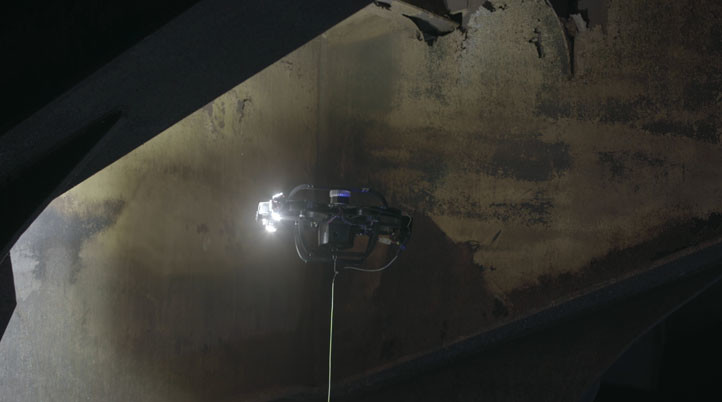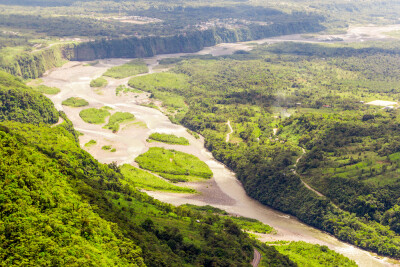In a partnership with Altera Infrastructure and DNV GL, Scout Drone Inspection used a drone to inspect a 19.4-meter-high oil tank onboard Petrojarl Varg, a floating production, storage, and offloading vessel.
Every 5 years, the International Maritime Organization requires ship owners to perform ship safety inspections, which depend to a large extent on the inspection thoroughness of a classification society and the individual inspector. These inspection procedures include 20- to 30-meter-high cargo or ballast tanks that require the use of scaffolding, rafting in a tank filled with seawater, or rope climbing. Taking everything into account, from vessel preparation to cleaning and ventilation, a single survey can exceed $1M. Besides, from a safety point of view, these are tiring, dangerous, and hostile environments.
“Falling accidents are commonplace,” said Erik Stensrud, senior principal researcher at DNV GL. “Oxygen shortage is another risk, and further, rafting accidents occur inside the tank when the ship is rolling. In hot climates, such as Dubai, over-heating poses another risk, with temperatures inside the tanks sometimes exceeding 50 degrees Celsius.”
Since 2015, DNV GL, an international accredited registrar and classification society headquartered in Høvik, Norway, has been working with drones to speed-up surveys. In 2018, together with Scout Drone Inspection, the company published a review of its Autonomous Drone-based Surveys of Ships in Operation (ADRASSO) research. The whole research focused on improving personnel safety, reducing inspection cost and environmental footprint, as well as improving transparency through the development of an intelligent, autonomous drone for ship inspections.
“A climbing team could spend days looking at certain parts of a tank.” Kristoffer Slåttsveen, design engineer at Scout Drone Inspection, stated. “Whereas, with a ready deployed system, you could do a general map of a tank easily in a few hours. It’s several scales of magnitude in potential time savings.”
Scout Drone Inspection, a Norwegian University of Science and Technology (NTNU) spin-off, offers a complete inspection system for ships’ cargo and ballast tanks, tanks for oil & gas (FPSOs, offshore rigs, tankers, refineries), process equipment (tanks, heat exchangers, etc.), factory halls, power plants, and more. The company’s solution includes the Scout 137, a drone that safely navigates in indoor confined spaces; a ground control app, to control the drone via a tablet; the Scout cloud portal, to follow inspections live or watch previous recordings; and a tether system, to provide the drone with unlimited flight time as well as a reliable, high-bandwidth data link.
For the Petrojarl Varg inspection, hosted by Altera Infrastructure, Scout Drone Inspection used the Scout 137 together with DNV GL’s artificial intelligence algorithm to spot any cracks and anomalies. Equipped with a 3D lidar sensor, the Scout 137 safely navigated and mapped the inside of the tank, capturing the required data with an RGB camera while live-streaming the whole process to Altera Infrastructure’s headquarters in Trondheim. Additionally, it features an onboard computer system that does all the computational work.
“This latest test showcases the next step in automation, using AI to analyze live video,” commented Geir Fuglerud, Director of Offshore Classification at DNV GL – Maritime. “As a classification society, we are always working to take advantage of advances in technology to make our surveys more efficient and safer for surveyors, delivering the same quality while minimizing our operational downtime for our customers.”
While during this inspection the drone was flown by a Scout Drone Inspection pilot, the company wants to provide fully autonomous flights in the future. Together with DNV GL, Scout Drone Inspection will continue to develop and qualify the technology. Eventually, DNV GL expects its camera and algorithm to be able to detect anomalies below the surface, such as corrosion and structural deformations.
















Comments